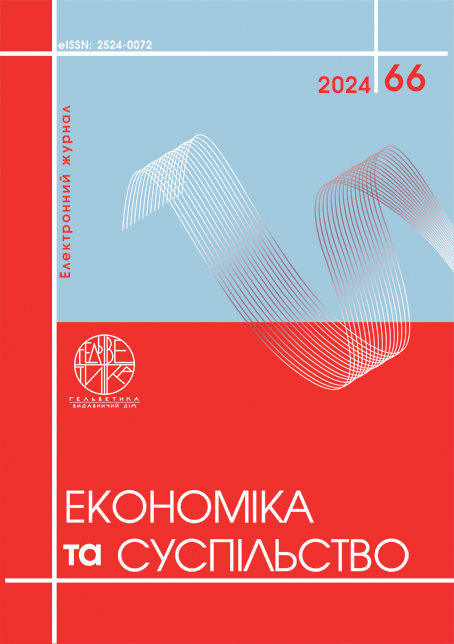ЗАСТОСУВАННЯ МОДЕЛІ McKinsey 7S В ЯКОСТІ ОСНОВИ ФОРМУВАННЯ ФУНКЦІЇ ЗВІТУВАННЯ НА БАЗІ ПРИНЦИПІВ TBL (TRIPLE BOTTOM LINE)
Анотація
У цьому дослідженні розглядається застосування моделі McKinsey 7S для цифрової трансформації організацій, включно із фінансовим плануванням та звітністю. Модель McKinsey 7S дозволяє узгодити такі елементи, як стратегія, структура, системи, персонал, стиль управління, навички та спільні цінності, що допомагає ефективно адаптуватися до змін в умовах Індустрії 4.0. Окрему увагу приділено концепції потрійного критерію (Triple Bottom Line), яка інтегрує соціальні, екологічні та економічні аспекти у функції звітності, підвищуючи стійкість бізнес-процесів. Розглянуто чотири основні етапи впровадження моделі 7S: аналіз поточної структури, визначення цілей трансформації, розробка плану дій та реструктуризація. Оцінено вплив кожного з елементів моделі на фінансову звітність, що дозволяє підвищити прозорість та надійність даних.
Посилання
Wit, B., & Pylak, K. (2020). Implementation of triple bottom line to a business model canvas in reverse logistics. Electronic Markets, 30(4), 679–697. https://doi.org/10.1007/s12525-020-00422-7
Nic Cavanagh & Colin Hickey. (2012). A triple bottom line approach to qra. Chemical Engineering Transactions, 26, 165–170. https://doi.org/10.3303/CET1226028
Barut, M. (2024). Triple bottom line reporting: A study of diversity and application by Australian companies. 3094348 Bytes. https://doi.org/10.25916/SUT.26293447.V1
Elkington, J. & Elkington John. (1999). Cannibals with forks: The triple bottom line of 21st century business (Pbk. ed). Capstone.
Godfrey, J., Hodgson, A., and Holmes, S. (2003) Accounting Theory, 5th Edition. John Wiley and Sons, Milton, Queensland.
Norris, S. (2023). In the eye of the beholder: Stakeholder perceived value in sustainable business models. Long Range Planning, 102406. https://doi.org/10.1016/j.lrp.2023.102406
Upward, A., & Jones, P. (2016). An Ontology for Strongly Sustainable Business Models: Defining an Enterprise Framework Compatible With Natural and Social Science. Organization & Environment, 29(1), 97–123. https://doi.org/10.1177/1086026615592933
Henriques, A., & Richardson, J. (2013). The Triple Bottom Line: Does It All Add Up. Taylor and Francis.
Van Bommel, K., Rasche, A., & Spicer, A. (2023). From Values to Value: The Commensuration of Sustainability Reporting and the Crowding Out of Morality. Organization & Environment, 36(1), 179–206. https://doi.org/10.1177/10860266221086617
Levin, P., & Espeland, W. N. (2002). Pollution Futures: Commensuration, Commodification and the Market for Air. In A. Hoffman, & M. Ventresca (Eds.), Organizations, Policy, and the Natural Environment Stanford University Press.
Elibal, K., Özceylan, E., & Çetinkaya, C. (2024). An ERP Based Industry 4.0 Maturity Model Proposal. Çukurova Üniversitesi Mühendislik Fakültesi Dergisi, 39(2), 535-544. https://doi.org/10.21605/cukurovaumfd.1514628
Peters, T. J., & Waterman, R. H. (2008). In search of excellence: Lessons from America’s best-run companies (Nachdr.). HarperCollins.
Kocaoglu, B., & Demir, E. (2019). The use of McKinsey s 7S framework as a strategic planning and economic assestment tool in the process of digital transformation. Pressacademia, 9(9). https://doi.org/10.17261/Pressacademia.2019.1078

Ця робота ліцензується відповідно до Creative Commons Attribution 4.0 International License.


